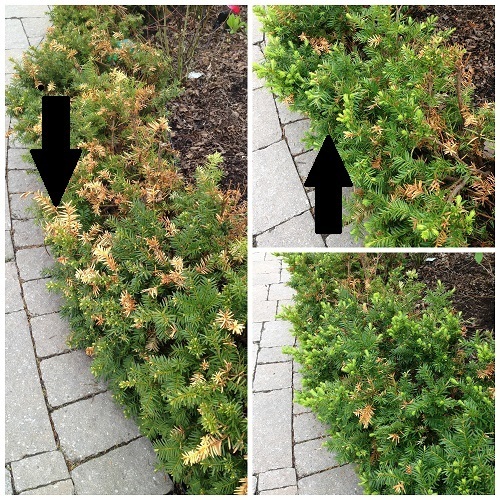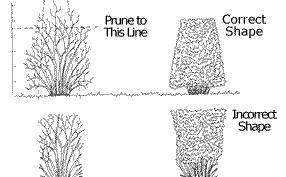After a hard, long winter and cool spring, plants can be delayed or just not sure what they are doing yet.
By the beginning of June many of these plants will have just finished blooming. Here is how you prune them.
Pruning of Spring Flowering Shrubs
Early spring flowering shrubs like Flowering Almond, Lilac, Sand Cherry and Forsythia should be pruned immediately after flowering. If you prune them before they bloom you will lose the flowering this season and maybe next depending on how hard you pruned.
If you want to rejuvenate mature spring flowering shrubs, as soon as the last flowers fade, use a pruning saw to cut off one-fourth to one-third of the biggest, oldest stems at ground level. Use pruning shears to shorten all of the stems to two or three feet from the ground. If you wish to greatly limit the shrub’s size, you can cut the branches as far back as six inches from the ground. By the end of the growing season, new branches will have formed. These will arch gracefully from the center and will be covered with new flower buds for next year’s spring show.
Summer Pruning
The pruning or trimming of summer flowering shrubs should be done by early June . If you miss the short window due to the weather, not to worry. Cut out any dead growth you can with a hand pruner. Otherwise leave the shrub alone to flower, especially Weigela and Spirea. Once the flowers are done, go ahead and cut back a bit and thin out like pictured below.
Pruning of Summer Flowering Shrubs
Summer flowering shrubs like Spirea, Potentilla, Weigela, and even Roses should be pruned in early spring before growth begins and then again later in season to remove spent flowers and encourage more blooms.
If Hydrangeas, specifically Endless Summer Hydrangeas are off to a really slow start like mine (pictured here) they can struggle to produce the flowers they once did. Fertilize them with a fertilizer with a high middle number i.e. 15-30-15 and add some compost around the base of the plants. This should kick them into high gear and the compost will help keep them there. If you try it, please let me know how it works for you.
Pruning of Evergreens
There are 2 types of pruning for evergreens; Selective and Non-selective. Selective is more time consuming but overall will be better for the plant in the long run. It involves using a hand pruner to cut back the evergreen at a specific point. Non-selective is using pruning shears to level the ends of the stem regardless of where the new growth is coming from. This creates a “tight” appearance on the outside but prevents light getting to the inside of the plant. If the outside is damaged (like the pic below) there is no green to cut to.
This year Boxwood and Yews may need a harder pruning than usual to remove the winter dieback and prune for shape prior to spring growth. Ice from winter is really hard on boxwood and yews but in most cases with the right care they can bounce back. Here are my yews:
I used selective pruning to cut back my stems that were severely damaged by an ice storm and a fallen tree and now the new growth is slowly coming in.
But in some extreme cases like this one…
The damaged leaves are too deep into the plant. I am afraid that if you trim back to the next green part of the stem, there would be no plant left, therefore, you are better off replacing them.
And lastly when working at creating a hedge it is important to trim hedges narrower at the top to let light get to the bottom of the plant, this is a common mistake that leads to the dying off or lack of green on the lower branches of evergreens.











